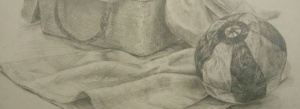Director Murakawa Takuya 村川拓也, known for his documentary theatre works like “Zeitgeber” (2011), presented at Festival/Tokyo 2012 the project “words“, which documents the one-week trip to the Tōhoku region that he embarked on together with his collaborators, several months after the disaster that afflicted the region in March 2011. A long silence marks the beginning of the performance. When the two actors start talking, they speak in turns, describing in full detail what they experienced, saw and thought during their trip. However, the stories they tell are devoid of gestures, relying completely on words. As if to compensate for the lack of movement, their discourse is being translated on the spot into the sign language.
The words of the people on stage lead the audience into an imaginary journey through the cities and villages of Miyagi, Iwate and Fukushima. Staying true to what they perceived themselves during their trip, the actors give a vivid description of those places and of the people they met there. As a result, facts are inevitably mixed with scenarios that no doubt happened only in the travelers’ imaginations. Nonetheless, the audience keeps following the actors through the windings of their streams of consciousness, because their words are all that the spectators have at their disposal in order to reconstruct the story.
All along this “trip”, the extremely detailed landscape descriptions, the very personal circuit of thoughts of the actors, and even their inner monologues are being transposed in the sign language. What seems at first to be an enstrangement between words and gestures turns out to be a double discourse: the gestures of the sign language interpreter are words for the eyes, such as what the actors are saying are words for the ears. In this way, the audience is faced with an overflow of words directed at both its visual and auditory channels of perception.
The same stream of thoughts accounts for another exciting challenge in store for the audience, which involves the experiencing of time. In spite of the endeavors of the local people to go on with their lives after the disaster, the ruins and, most of all, the many cemeteries are constant reminders of the time when the tsunami hit. With the shadow of that time always in background, there is the “present time” of the story, which unfolds as the actors describe their experiences during the trip. Nobody would have expected that yet anothertime dimension, namely “right now” – the time when the play is being performed – would also be brought into the story. In order to shift the attention of the spectators towards the here and now of the performance, microphones are turned towards the audience. During the long moments of silence, their very own silence – disrupted only by the occasional coughs of the members of the audience – is being projected back towards the spectators. As a viewer, you experience for a moment the illusion that you might hear your own breathing amidst the echo of that silence.
In fact, the words “here” and “now” are repeated several times in the actors’ discourse, but each time they refer to different coordinates: the “here” of the theatre and the “here” of Minami Sōma, the “now” of the theatre and the “now” of the actors’ trip in Tōhoku. You realize very soon that the border between these separate coordinates has no materiality in the plane of imagination and that you are able to wander freely between then and now, between there and here. You even have the sudden revelation that to accompany the actors in their long walks through the villages and cities of North-Eastern Japan has been to go back and forth through space-time. What the audience has been witnessing all along is not more and not less than space dissolving in time, and time flowing into space.
In this performance showing an image of the present-day Tōhoku, several months after the disaster, the past is not allowed to overwhelm the present. At the same time, the people living right now are not allowed to distance themselves from the events of the past; they are not allowed to forget them.
With all its subtleties, “words” is a daring project that engages the spectator fully in the re-construction of the story. Not only does it push the boundaries of theatricality, but it also sheds new light onto what the theatre viewer can experience from the audience seat.
(* This article has first appeared on the “Blog Camp in F/T” platform, a Festival/Tokyo 2012 program for young critics lead by performing arts journalist Iwaki Kyoko, and was reblogged with permission.)

